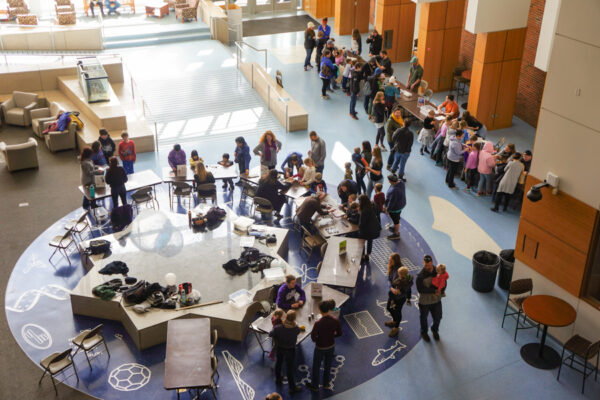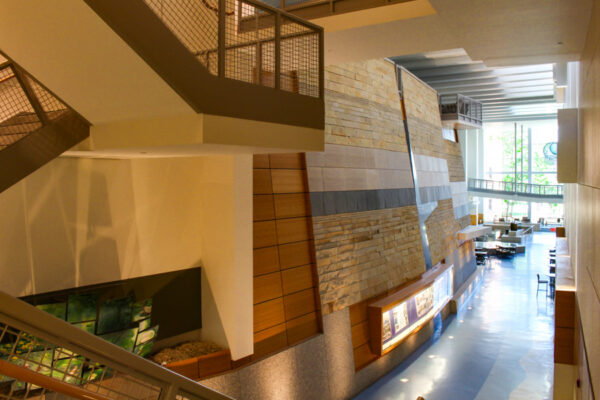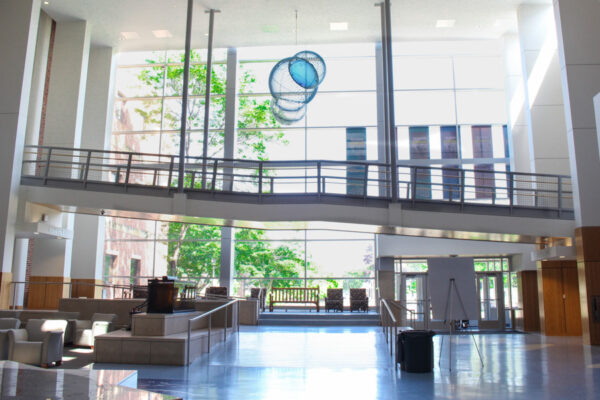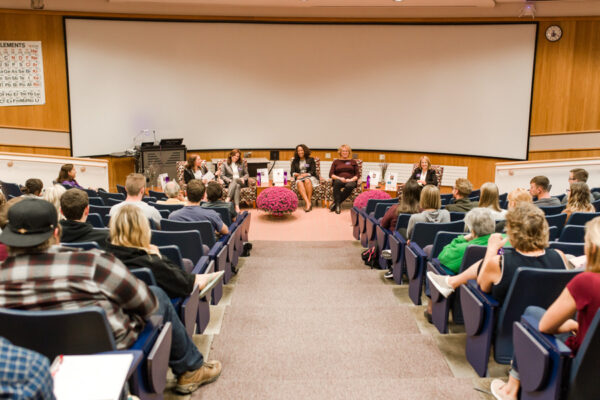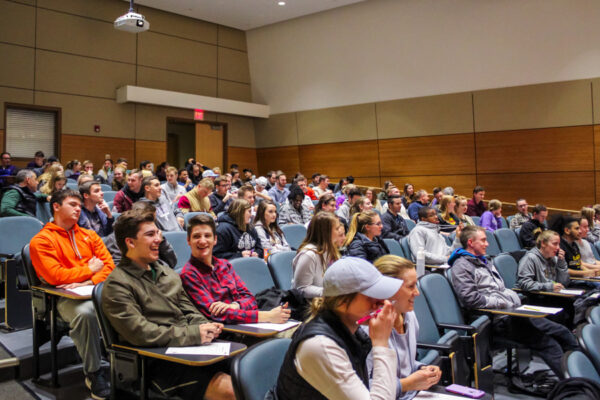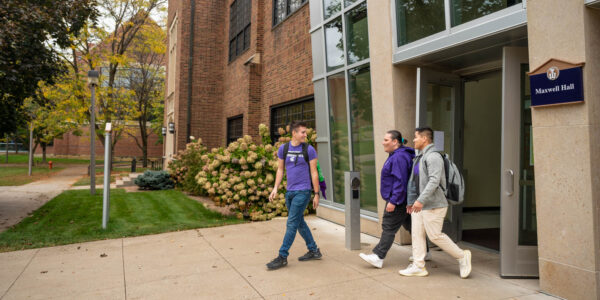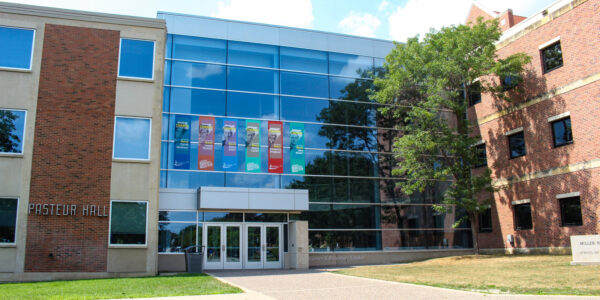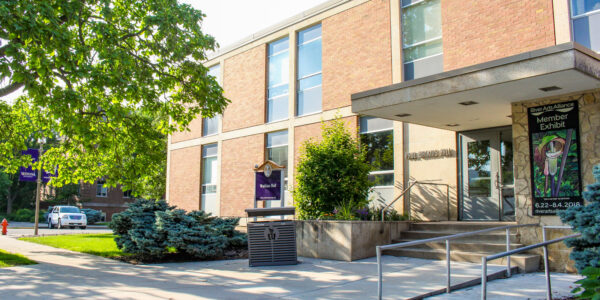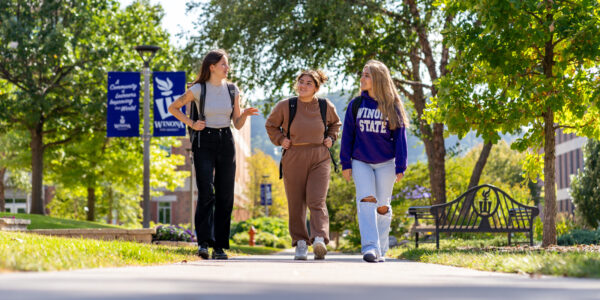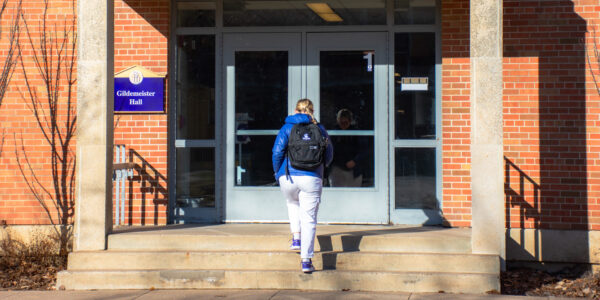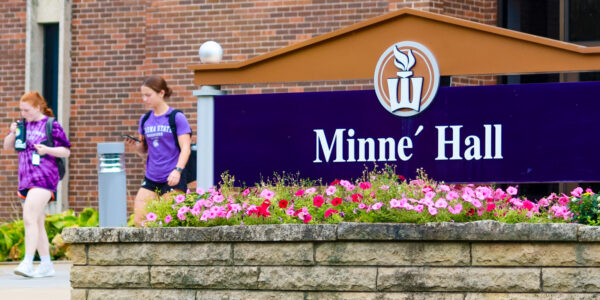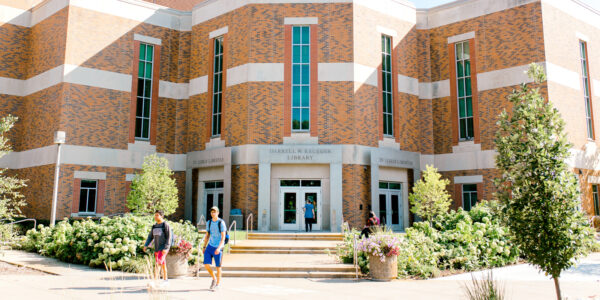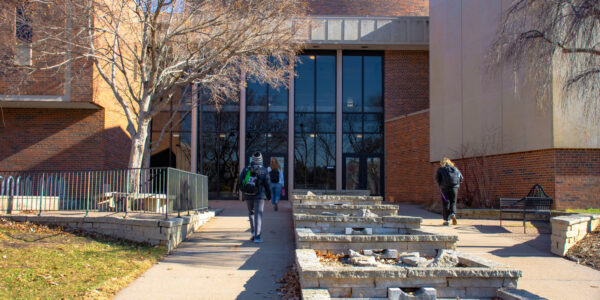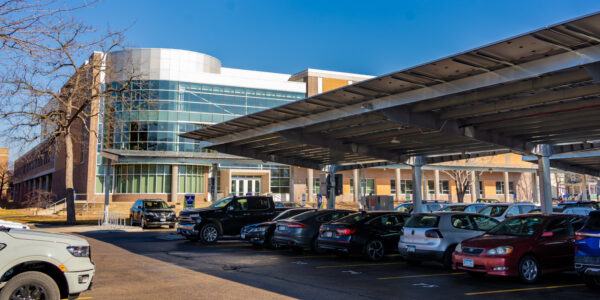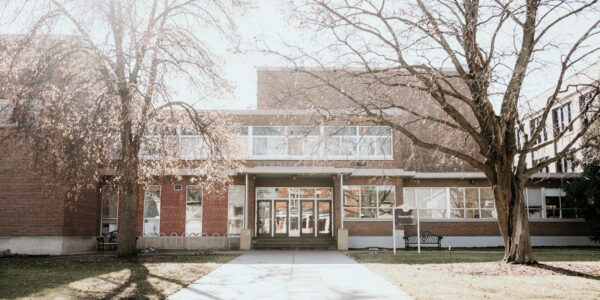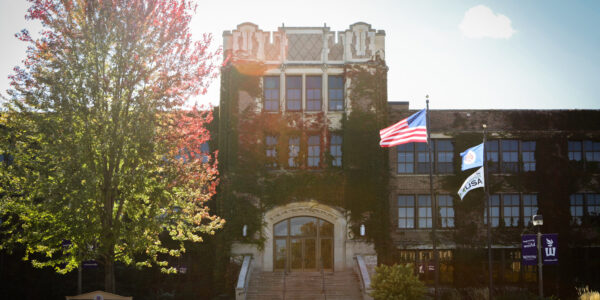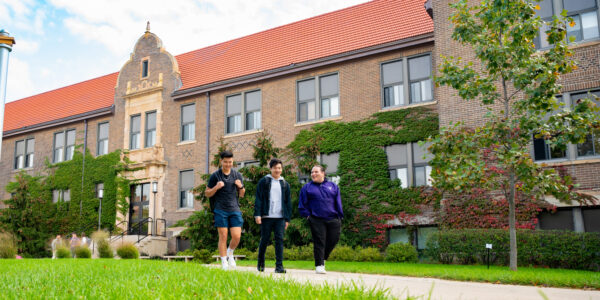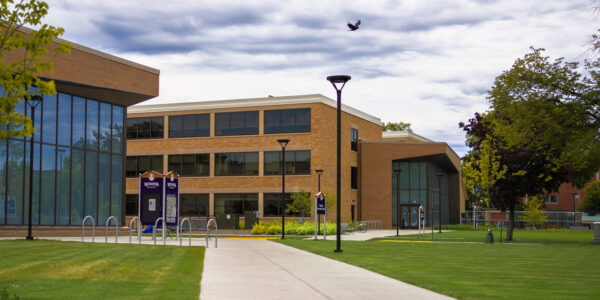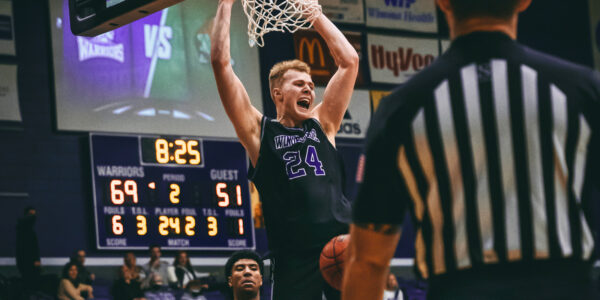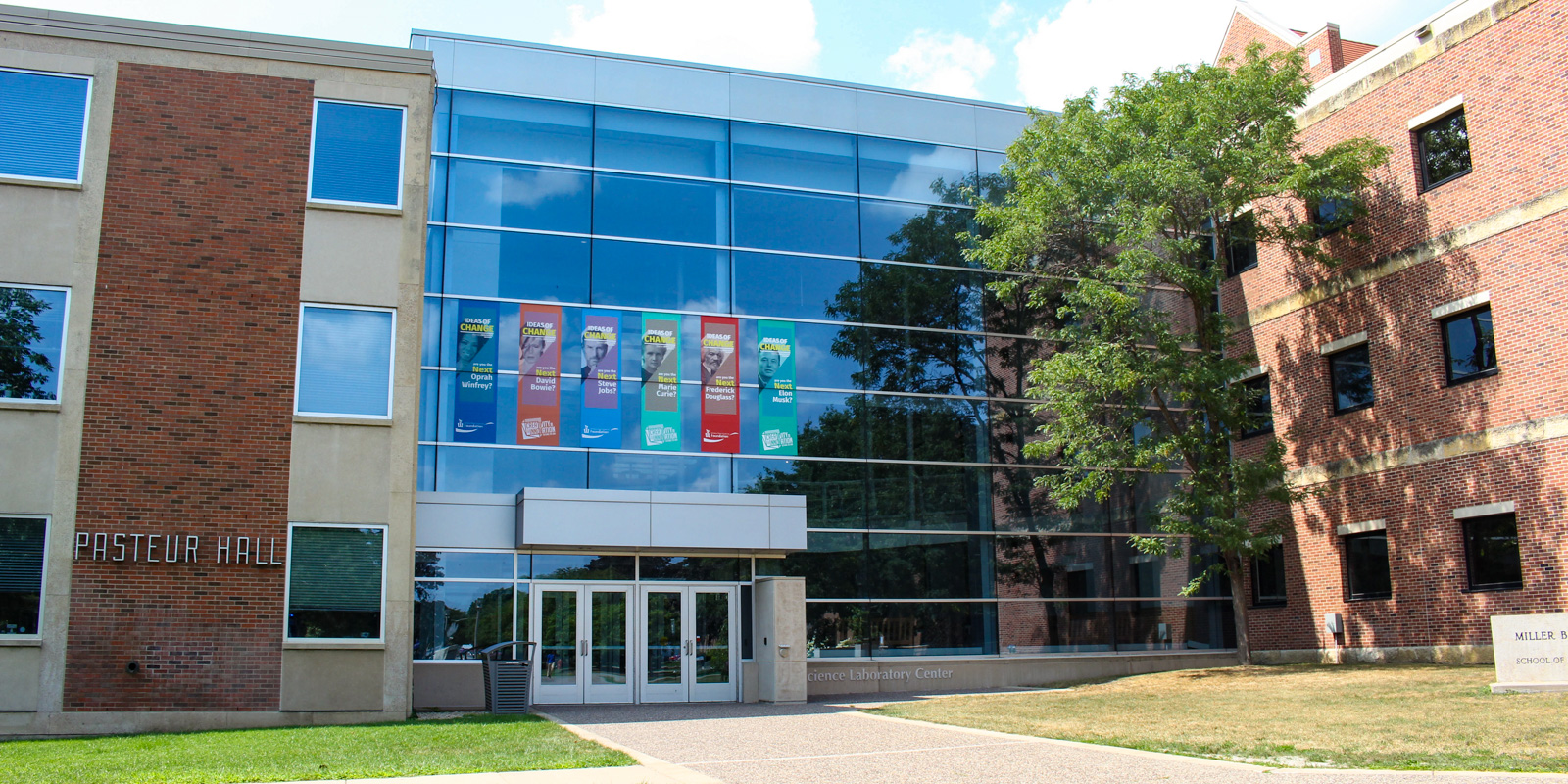
Science Laboratory Center, Pasteur Hall & Stark Hall
These 3 interconnected buildings have classrooms, science labs, lecture halls, and study lounges on each floor.
The Science Laboratory Center (SLC), Pasteur Hall, and Stark Hall are located in the northwest corner of Main Campus between Watkins Hall and Maxwell Hall.
Academic Departments
The Biology Department provides students with a scientific foundation for a variety of careers as well as pre-professional training for doctors, dentists, and veterinarians.
The Chemistry Department offers programs accredited by the American Chemical Society, and faculty are active research scientists into sub-disciplines such as organic, analytical, and polymer chemistry.
The Composite Materials Engineering Department is the only undergraduate program in the United States to offer a Bachelor of Science in composite materials engineering.
The Geoscience Department lab facilities complement WSU’s unique location in the “driftless region,” which enhances student experiences out in the field.
The Department of Undergraduate Nursing has been providing high-quality nursing education in southeast Minnesota for more than 50 years.
The Physics Department has a close-knit program that sets students up for success in the fields of physics and engineering as well as teaching.
Atrium
The Atrium is a spacious area on the first floor where students can study and hang out between classes. It’s also a frequent spot for campus events and festivals, such as the Frozen River Film Festival.
The large star-shaped bench in the center features symbols chosen by academic departments to represent their area of study as well as constellations that you can view in the region.
The Atrium floor includes a topographical map of the Mississippi River, and there’s a large wall with stone paneling to represent similar materials found in the local environment.
Lecture Halls
Each with seating for 200 people, these lecture halls are used for classes, workshops, guest speakers, and movie screenings.
Science Labs
WSU has invested in state-of-the-art scientific equipment and facilities for students to use during class instruction and individual research projects.
The hallways are proudly lined with capstone posters that students presented at the Research & Creative Achievement Day and other research fairs.
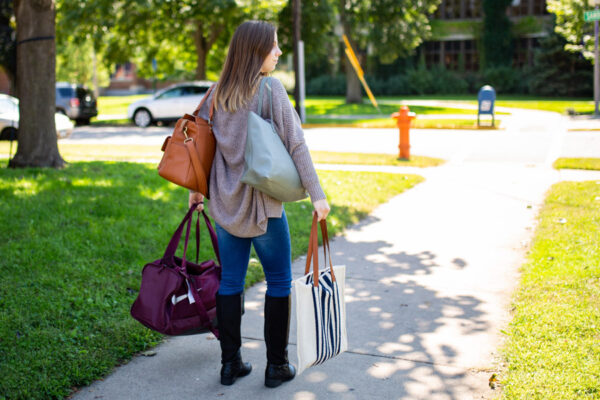
Students get to work with sophisticated and life-like manikins, including newborn, infant, child, adult, and a birthing female.
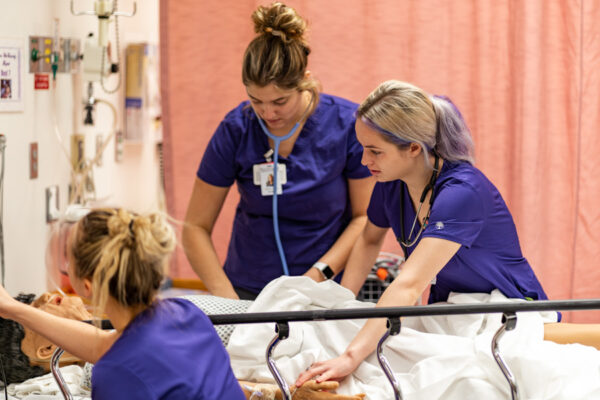
Our greenhouse and herbarium complex provides growing spaces for biology research and programs.
Besides the luscious greens, the greenhouse is home to 2 painted turtles.
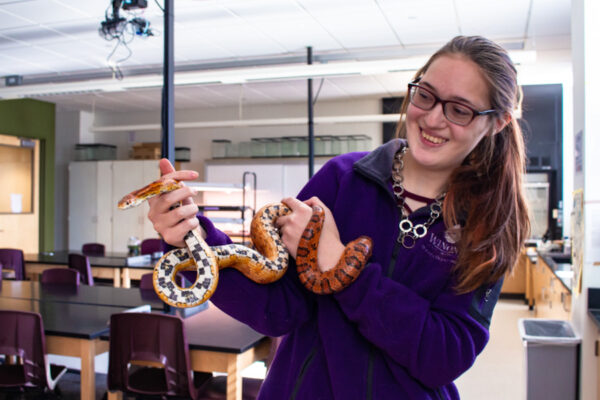
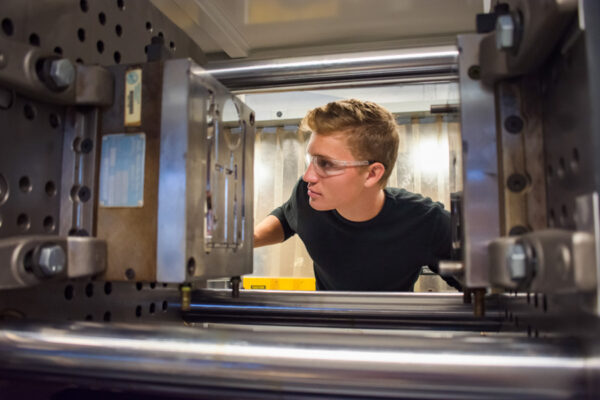
Winona State is a Yellow Ribbon Campus. This means we support our Veteran students.
The Veteran’s Center is located on the first floor of Stark Hall. It’s a place for Warriors to relax in between classes or work on assignments.
